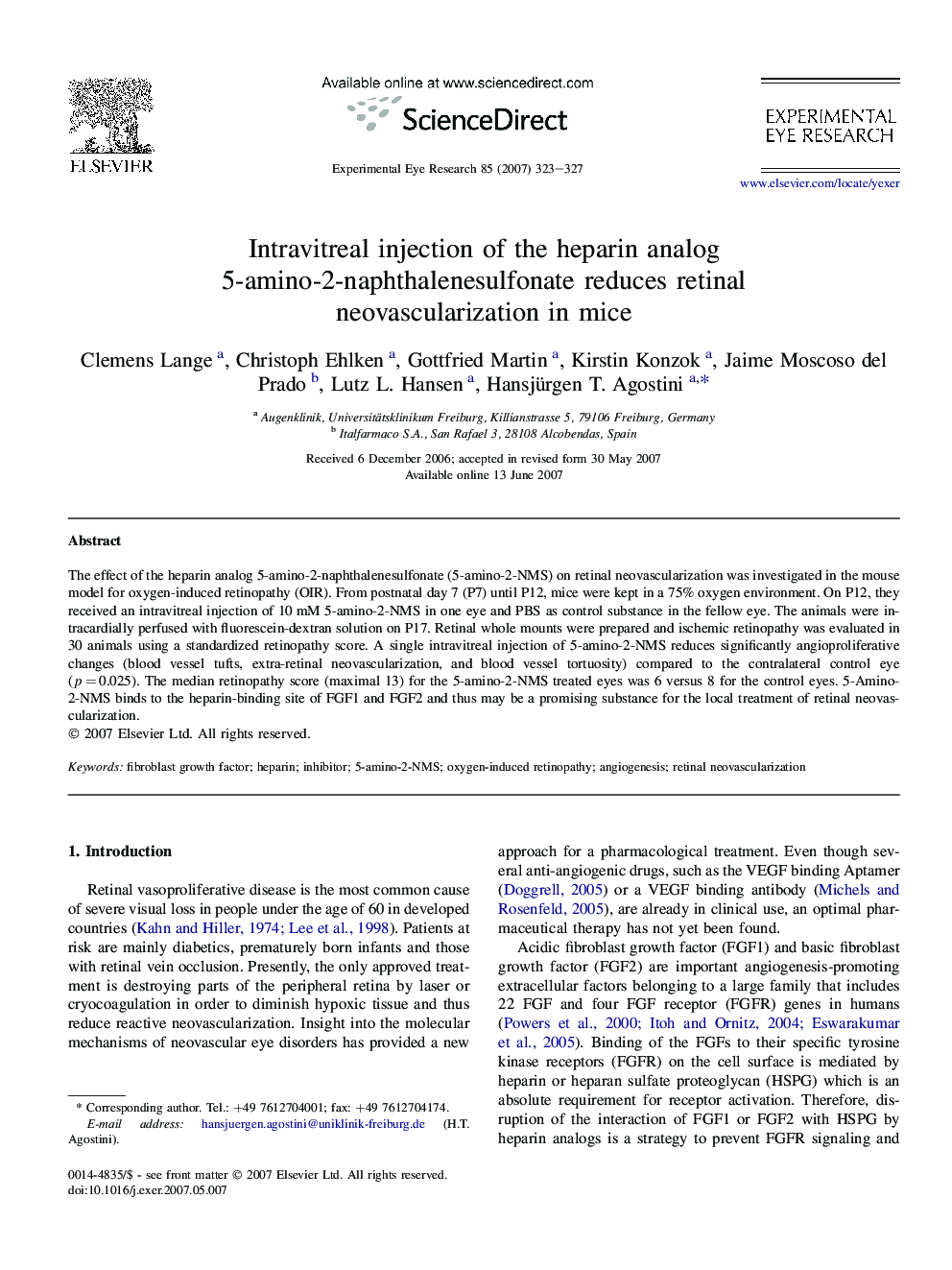| Article ID | Journal | Published Year | Pages | File Type |
|---|---|---|---|---|
| 4012312 | Experimental Eye Research | 2007 | 5 Pages |
Abstract
The effect of the heparin analog 5-amino-2-naphthalenesulfonate (5-amino-2-NMS) on retinal neovascularization was investigated in the mouse model for oxygen-induced retinopathy (OIR). From postnatal day 7 (P7) until P12, mice were kept in a 75% oxygen environment. On P12, they received an intravitreal injection of 10 mM 5-amino-2-NMS in one eye and PBS as control substance in the fellow eye. The animals were intracardially perfused with fluorescein-dextran solution on P17. Retinal whole mounts were prepared and ischemic retinopathy was evaluated in 30 animals using a standardized retinopathy score. A single intravitreal injection of 5-amino-2-NMS reduces significantly angioproliferative changes (blood vessel tufts, extra-retinal neovascularization, and blood vessel tortuosity) compared to the contralateral control eye (p = 0.025). The median retinopathy score (maximal 13) for the 5-amino-2-NMS treated eyes was 6 versus 8 for the control eyes. 5-Amino-2-NMS binds to the heparin-binding site of FGF1 and FGF2 and thus may be a promising substance for the local treatment of retinal neovascularization.
Keywords
Related Topics
Life Sciences
Immunology and Microbiology
Immunology and Microbiology (General)
Authors
Clemens Lange, Christoph Ehlken, Gottfried Martin, Kirstin Konzok, Jaime Moscoso del Prado, Lutz L. Hansen, Hansjürgen T. Agostini,
